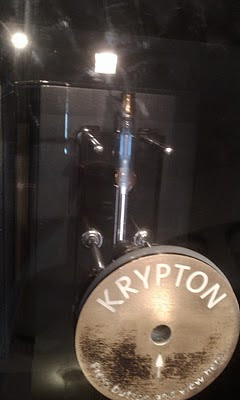(Note to the reader: I published this post several months ago in another blog which I was planning to run as a sister site to this one. Since then, I haven't been feeding and maintaining the other blog, so I'm republishing here.)
Club Tee-Gee was founded sixty-four years ago by returning World War II veterans Neal Tracy and Joe Grzybowski. As is typical in this city, most people probably enter from the parking lot side, but the street side entrance is worth a look.
Club Tee-Gee was founded sixty-four years ago by returning World War II veterans Neal Tracy and Joe Grzybowski. As is typical in this city, most people probably enter from the parking lot side, but the street side entrance is worth a look.
Although the place has been rebuilt a couple of times since its founding, it's obvious that the building's design has stayed true to its postwar origins and heritage. The inwardly angled walls give the building a vaguely Googie-esque shape which seems to suit a cocktail lounge well. It seems the only thing missing is the neon-lit outline of a martini glass. The blank areas betray the former presence of windows, which are absent for a very good reason. In the mid 1980’s someone threw a Molotov Cocktail into the place, nearly burning it to the ground. As it turns out, Vyacheslav Molotov, was still alive in 1986, but I'm confident he was nowhere near Atwood Village at the time the attack went down.
 |
| Club Tee-Gee's, Atwood Village |

A sure sign of a good neighborhood bar is that the customers' ages run the gamut from 21 years and zero days to the chronological limits of human life. This is certainly true of theTee-Gee, where you're apt to see a group of twenty-somethings holding down one booth, and a group of fifty-somethings occupying the next booth. There's no live music, but the jukebox gets its music from the Internet. After sixty-four years the kind of music chosen by the patrons usually sets up a pleasant kind of cognitive dissonance; the bar looks like you should be hearing Frank Sinatra, but you're much more likely to hear some kind of rock and roll. Nevertheless, you can undoubtedly get some Sinatra if you want it.
 | |
| Tee-Gee's Interior |
Neighborhood bars do share a good deal of common ground. They're almost always fairly dark inside, with the bar on one side of the room and the tables on the other. But good bars need to have some kind of individual touches, because if they don't, they look like The People's Alcohol Dispensary #714. Behind the bar of the Tee-Gee we see the customary indicators of beverage abundance--stacked up glasses and the typical array of bottles.
 | |
| Behind The Bar |
To the left, the Homely Lampshade adds a nice warm touch, but what's really individual here is the abundant supply of Betty Boops, one of which has pride of place in the middle of the bartenders' workspace. Another rises imposingly in the corner, where the glittery ceiling above the Boop creates a nice effect.
In case you noticed some of the sketches behind the bar, those are another one of those individual touches I mentioned. There is an artist in the family here, the sister of one of the owners, and most of one wall is devoted to her artwork.
 | |
| Close-up of the picture wall |



























